An empty storefront in downtown Burns has been remade into a creative space and small-business incubator.
Tory Schmidt grew up in Burns, attended school in Montana and has also lived in Ashland and Bend. But in 2018, she moved back to Burns to be closer to her family. She and her husband, Jeff Schmidt, and their 7-year-old daughter moved in with Tory’s mother at first.
Tory is a graphic designer and Jeff is an outdoor guide, and they were both able to continue making a living in Burns. Tory is also a visual artist who works in a variety of media; she’s painted murals in downtown Burns and also works in watercolor. But they struggled to find the space to work at home — and they wanted space to continue their creative endeavors.
So they decided to rent some space. They found a retail space downtown — it had been vacant for years when they showed interest but previously housed a JC Penney and a flower show, Tory says — that they could use as office space but also as creative space.
“We all just needed a place — a professional place to meet our clients that wasn’t at our home,” Tory says. “We wanted to stop running our businesses off our kitchen counters.”
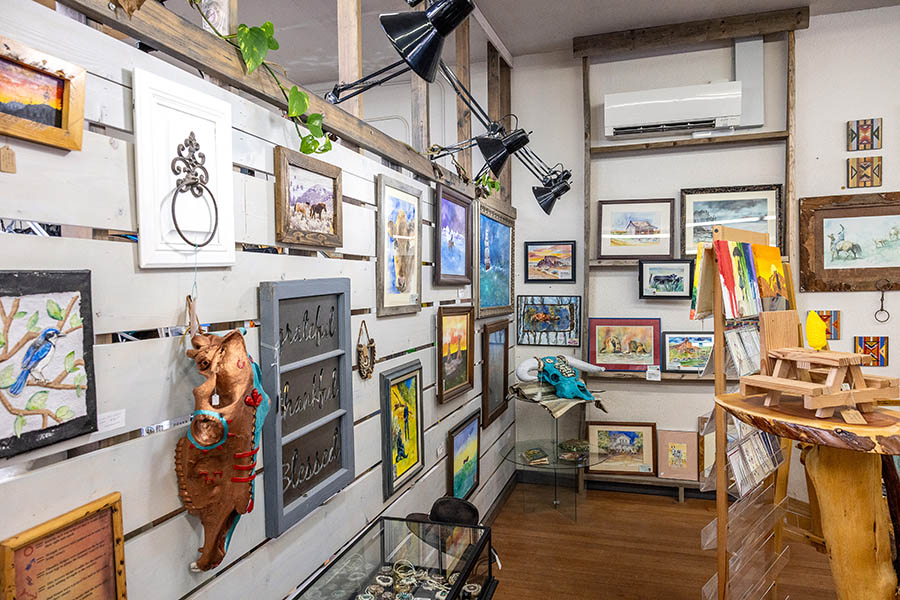
In collaboration with the Corvallis-based Foundry Collective, they launched Spark Collaborative Studios. It’s a workspace for local artists. It’s a gallery and retail store. It’s also a community space. And it’s a small-business incubator for artists and craftspeople in the area.
There are more artists in Harney County than you might think. Burns has a population of just under 3,000, and the county as a whole had 7,495 residents at the time of the 2020 Census. It’s the seventh-least populous county in the state and the most sparsely populated, with a population density of .72 people per square mile; 75% of Harney County is federal land, including the U.S. Fish and Wildlife-managed Malheur National Wildlife Refuge — the site of a 2016 takeover by far-right extremists, largely from outside the area — that attracted national media coverage. (While Harney County leans conservative — the county hasn’t carried a Democrat in a presidential election since 1964 — most residents didn’t join the occupation themselves.)
In the 1970s, Harney County was the wealthiest county in the state, as measured by per-capita income, but the county has suffered economically in subsequent decades, largely due to the closure of mills in the area.
By 2023 the median household income was $43,387, according to Census data presented in a 2023 report from the Biz Harney Opportunity Collaborative, an economic development organization formed under the umbrella of the High Desert Partnership. That’s a 10% increase from 2019, but the cost of living in the area has increased by 19% — and incomes in the area are about two-thirds the median household income for the state. Agriculture is still the backbone of the local economy, with 20% of the local economy being directly tied to farming or ranching, but like many parts of rural Oregon, that’s beginning to change.
Tory Schmidt says she has seen analyses suggesting that as many as 50% of people in Harney County identify as artists or craftspeople, and derive at least some income from making art. Oregon Business wasn’t able to independently verify those numbers or locate the study she referenced. Most of the artists who belong to Spark, Tory says, have other jobs — they’re farmers or ranchers who make their own saddles and tack, or work in health care but crochet or paint when they find the time.
“We kind of have the full gamut,” Tory tells OB of the 35 or so artists who belong to Spark. “You know, we’ve got leather workers in our studio, we’ve got ceramicists, we have people who do sculpture.”
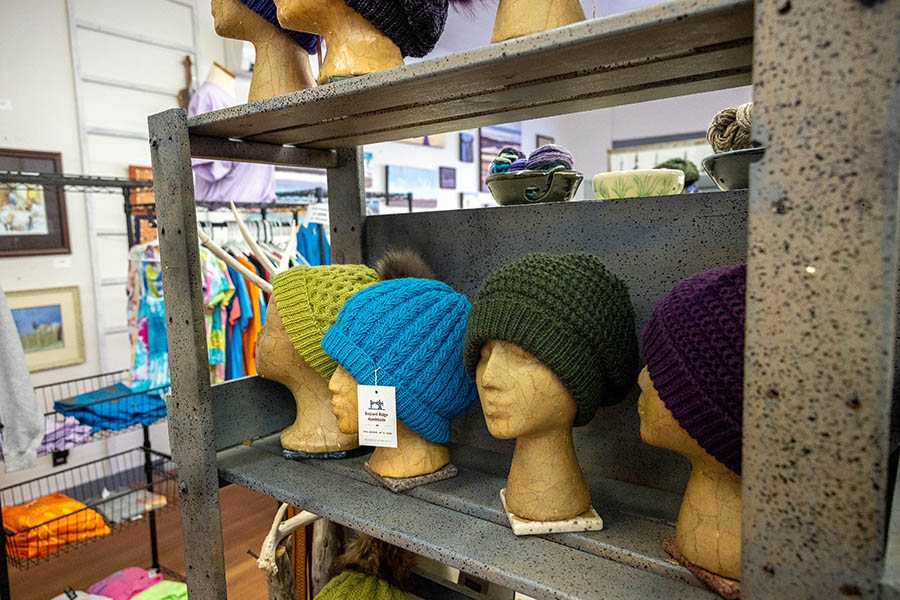
About half of Spark’s 3,000-square-foot space is retail space for artists, who pay as little as $30 or as much as $110 in monthly rent. The wares on display include oil and acrylic paintings and printed photographs — but also a combination gun cabinet and coat rack Tory describes as “very Harney County,” and leather journals by a local artist named Doug Furr (yes, that’s his real name, the Schmidts assure me) who also does metal work.
Beyond a partial wall lies what the Schmidts refer to as a “room of requirement” — a space that can be and has been adapted to whatever needs arise. Some members of the collective have dedicated workspaces in the area, but it’s also a space used to store tools and supplies — “and of course, our Christmas decorations are still out,” Tory says, laughing, as she walks past a pile of tinsel and lights.
The tools include Jeff’s industrial sewing machine: He makes outdoor gear as part of his guide business, Calamity Butte Guide Service, but also takes on other large-scale sewing projects, like covers for covered wagons — as well as woodworking projects like walking sticks and picture frames.
Different people make art for different reasons. Some Spark members are full-time artists or artisans making a living or engaged in a lucrative side hustle; some do it for more therapeutic reasons (Spark partners with Symmetry Care, a local mental health organization, to offer art-therapy classes for people who use its services).
In many cases, there’s a little bit of both in the mix.
“This is my occupational therapy,” says Amy Roads, gesturing at a rack of jewelry she makes from vintage and locally sourced beads. Roads is retired but worked in retail and as a cake decorator. She’s also relatively new to the area, having moved here with her husband from Illinois three years ago.
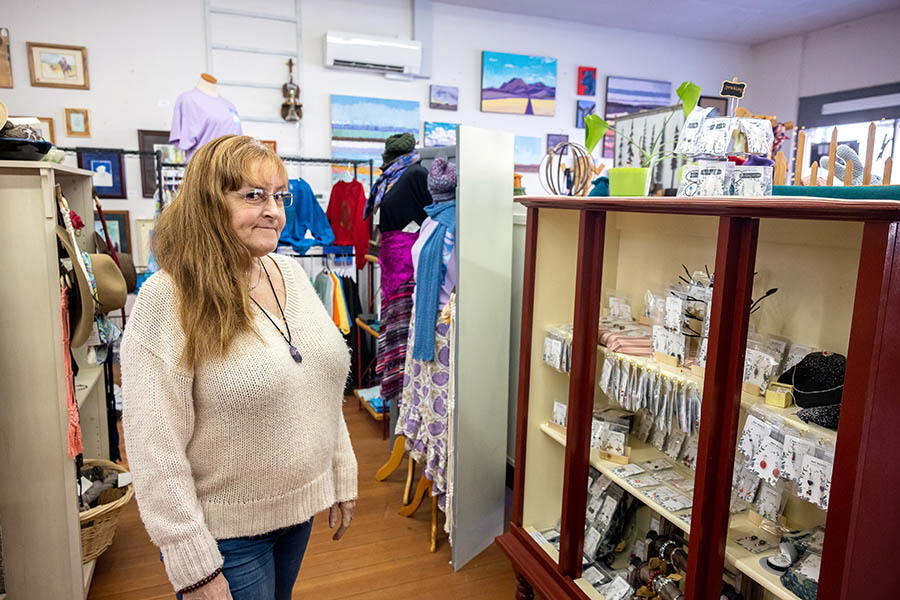
Roads used to play three instruments, but after having two strokes she lost the ability to read music, putting a damper on her creative expression.
One day Roads’ husband brought home a box of items he bought at an auction. At the bottom of the box was a small collection of vintage necklaces. On a whim, Roads started taking them apart.
“He challenged me to put it back together,” she says. Gradually, she started making new pieces. “It’s turned out to be really fun.”
She started seeking out beads — she’s really fond of turquoise, jasper and agate — and eventually selling her work. She’s been a member of Spark for two years, and when OB visited, Roads was getting ready to sell necklaces at the Harney County Migratory Bird Festival, an annual festival that takes place in mid-April, when a wide variety of birds stop at the refuge.
Not all of Spark’s artists have registered as official businesses, Jeff says, but he and Tory encourage them all to do so — and to join the Harney County Chamber of Commerce.
Tory says she also coaches artists to value their work properly.
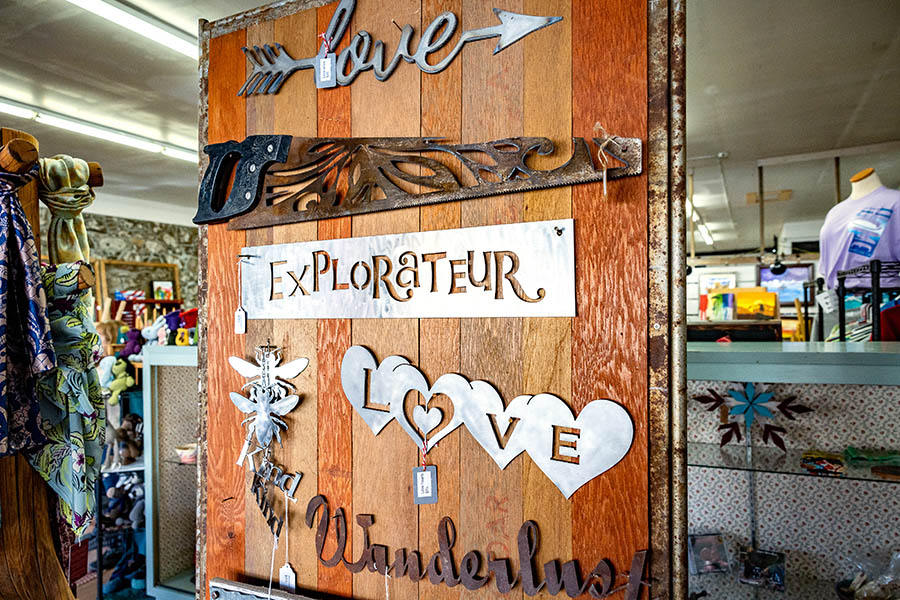
“Artists are notorious for undervaluing their work,” Tory says. Roads chimes in that when she first started selling her jewelry, she wanted to charge just $3 to $5 per necklace — an idea Tory quickly disabused her of.
“You have to at least cover your costs and your time,” Roads says.
The original vision for Spark was to form a maker space and coworking space, renting out “hot desks” to remote workers. But the organization has pivoted from that to being more of a retail space. Spark charges a 10% commission on art sales — at first they didn’t want to charge anything, Tory says, but they do have a small amount of overhead on top of rent, including credit card fees, plus things like bags and tissue paper, which the commission covers.
“We want to encourage the artisan maker-creator world as much as possible in rural communities because it has the highest net economic impact in a community,” says Brad Attig, founder of Foundry Collective, a Corvallis-based nonprofit created specifically to foster economic development in rural parts of the state. Spark is one of Foundry’s partner organizations, of which there are several in other small Oregon towns, including Estacada and Coos Bay. That’s particularly true in cases where makers are selling objects made from local materials, with local labor — like a hat knitted from locally raised wool. (Jeff notes that most of Spark’s retail sales are from people passing through the area, particularly during warmer months.)
But businesses like that are difficult to scale, he says.
“By having locations like Spark Collaborative Studios, you create kind of on-ramps that are easier [to get started],” Attig says. “I can come in and I only need 50 square feet. But then I build my business: Now I’m 100 square feet. It was a hobby, but now it’s kind of a side gig.”
On the afternoon she spoke with OB, Biz Harney coordinator Andrea Letham had just finished teaching a Co.Starters boot camp — a 10-week training for budding entrepreneurs developed by a Chattanooga, Tenn.-based organization of the same name. Its graduates included three budding food-cart owners — one who plans to open a taco truck and two others focusing on vegan Israeli food and Korean fusion.
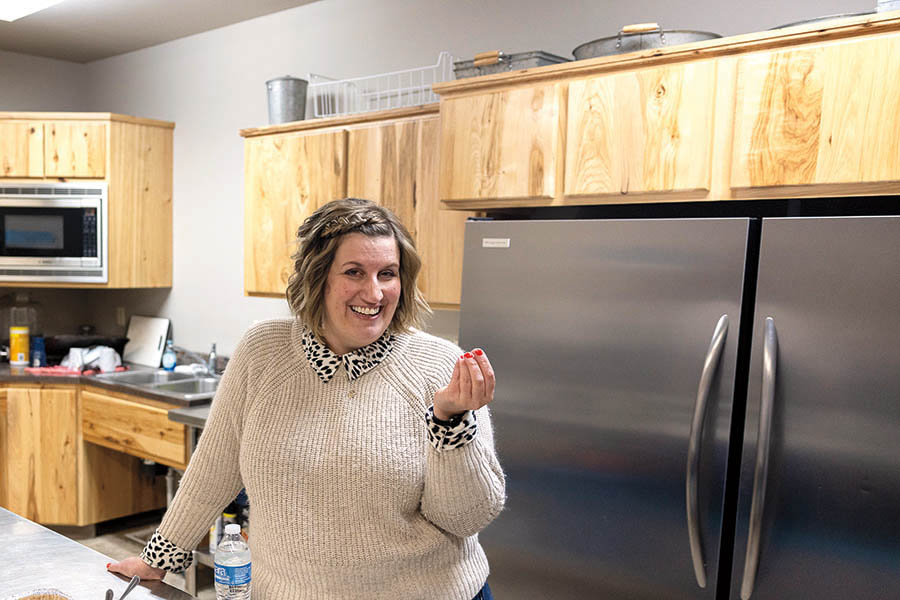
“We’re a little low on restaurants right now. We’ve had two close within the last year,” Letham tells OB. “People retired and moved on.”
But while downtown Burns still has a number of vacant storefronts, there’s also a new crop of businesses opening — including others selling locally made arts and crafts, and also a brewery. And her most recent Co.Starters class included several artisans interested in turning their craft into a business — including a Spark member who is looking to scale up her business.
“I think the wonderful thing about Spark is people don’t always have the money to start,” Letham says. “They need an incubator, a place to start. That’s what Spark offers, and especially for artisans and makers. It’s a really good launching place for them.”
The Schmidts estimate they spent about $1,200 to rehabilitate the space, and Jeff says it’s been a “really expensive hobby” for the couple, rather than a profitable business.
Attig says since COVID hit, his organization has leaned into working to create virtual hubs so that rural entrepreneurs can connect and discuss the resources that are available to them — and to build relationships, which can be as important as access to capital or space.
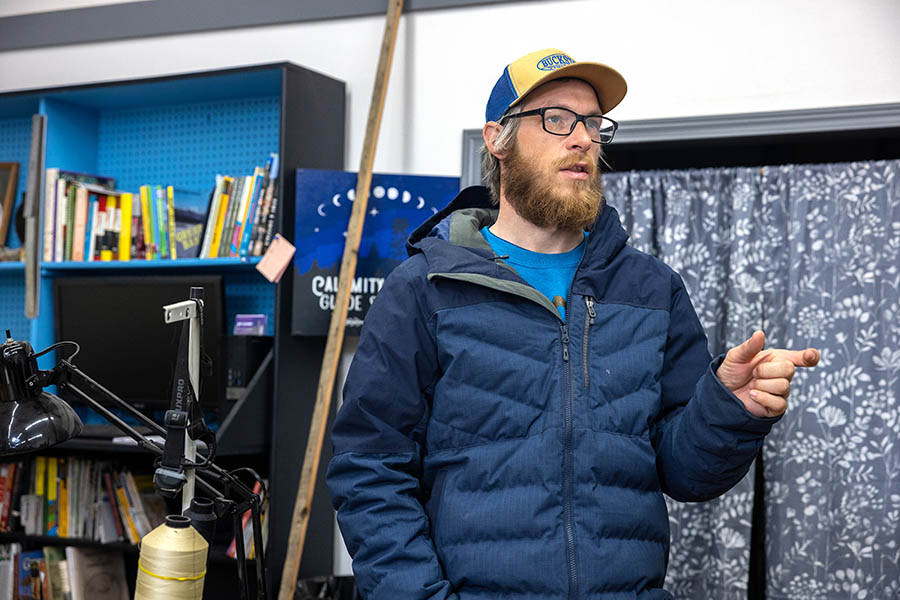
Spark hosts regular artists’ receptions and classes, and meetings for community groups, like the Wild Women of Harney County, to which Amy Roads belongs. (“We’re planning a community cleanup. That’s how wild we are,” Roads says.)
“If there’s a need we can fulfill, we try to make space for people,” Jeff says.
Editor’s Note: The print version of this story, which appears in the May issue of Oregon Business, inaccurately described Harney County’s Co.Starters’ classes as being offered by Spark. This version has been updated to reflect that the classes are offered by the Biz Harney Opportunity Collaborative. Oregon Business regrets the error.
Click here to subscribe to Oregon Business.




